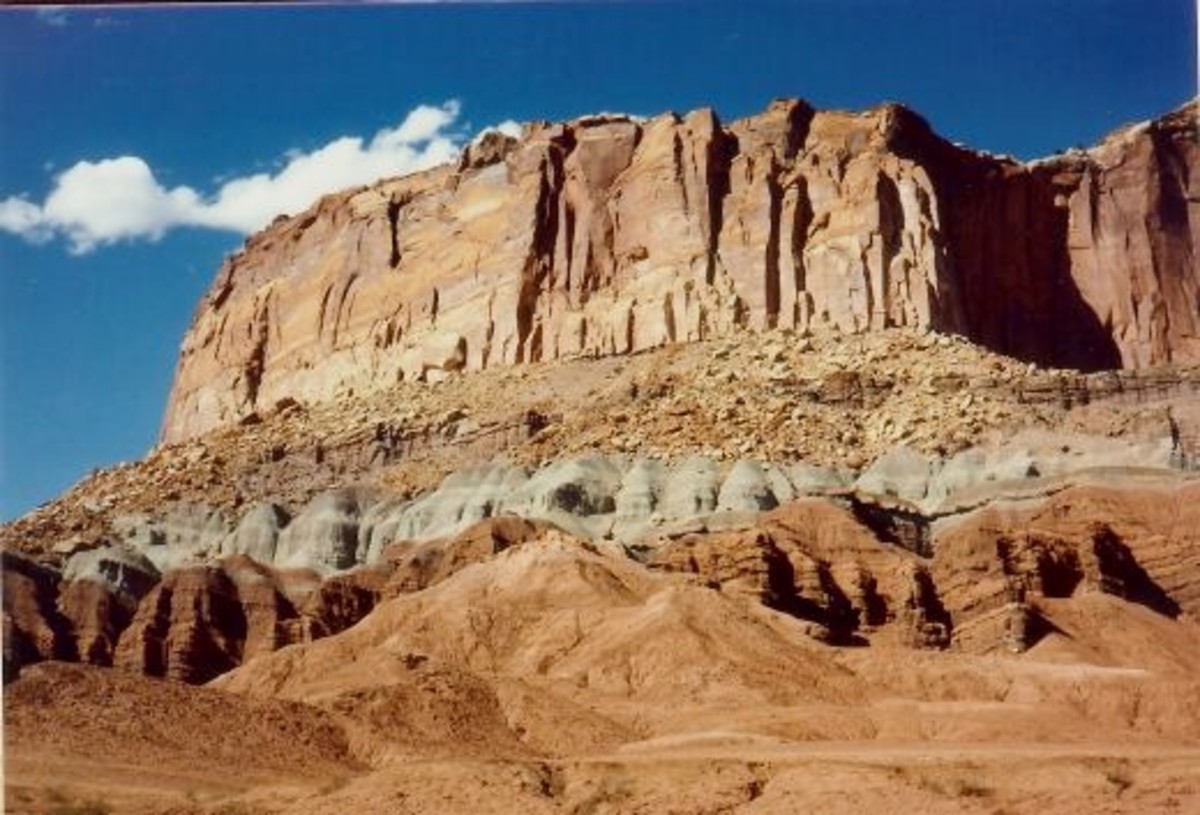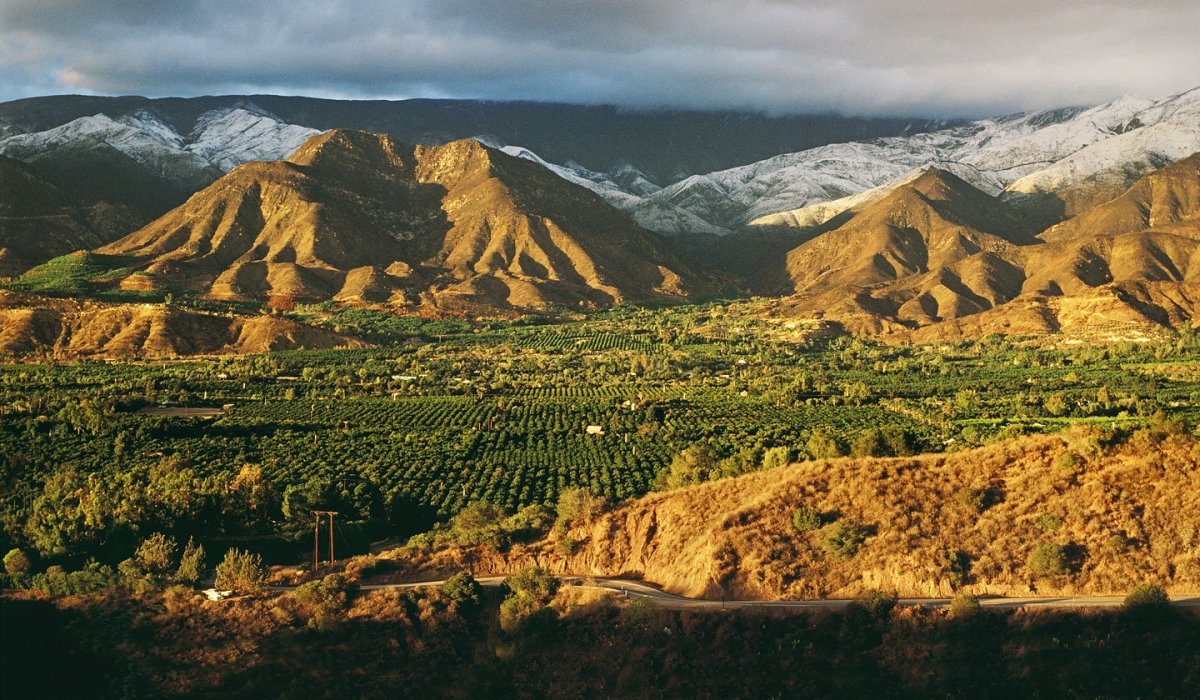Dartmoor, Devon, UK - National Park
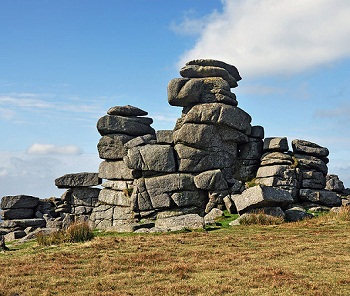
Dartmoor, A Wild and Beautiful Place
Dartmoor is located in the county of Devon, south-west England, UK. It was designated as a National Park in 1951 and covers an area of 368 square miles.
The landscape ranges from lovely wooded valleys to desolate but beautiful wild moorland interspersed with rocky tors. There are areas of bogs and rough pasture.
The range of habitats found makes it important for wildlife and the moor's long history of human settlement makes it rich in archeological remains.
Map of Devon, UK Showing Dartmoor
Dartmoor's Geology
The geology of Dartmoor reflects a history going back 400 million years. Over the millennia, the area was covered by sea twice laying down sedimentary rocks like sandstone and shales. Volcanic upheavals caused molten granite to be forced upwards - the superheated material changed the sedimentary rocks to metamorphic rocks like marble and limestone. Chalk was deposited by the bodies of sea creatures the second time the area was covered by water and, when the waters receded, this was eroded by weather exposing the underlying granite. Glaciers never reached this far south during the last Ice Age, stopping around the Bristol area, but Dartmoor was extremely cold.
Dinosaurs roamed the area between 145 and 270 million years ago and giant trees grew - hard to imagine, looking at the moorland today.
Beardown Man, prehistoric menhir on Dartmoor
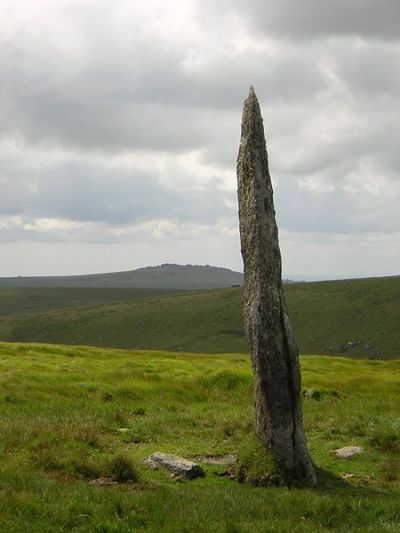
Archaeology on Dartmoor
Human activity started on Dartmoor about 10,000 years ago when it was covered by forest. The remains of flint tools from nomadic Stone Age people have been found. These people were hunter gatherers and made small clearings in the forest before moving on. It was only about 6000 years ago that rudimentary farming began, leading people to form settlements, grow crops and keep animals. Again, flint tools from this period (4000 to 2500 BC) have been found on the moor together with long (burial) mounds and stone burial chambers.
There is much more evidence on Dartmoor for human activity during the Bronze Age (2500 to 600 BC). At this time, the climate was better than today, both warmer and drier. The high moor was gradually cleared of its forest to be replaced by farms whose fields were marked out by stone walls.
The most dramatic archaeological evidence are standing stones, circles and stone rows, like those near Tavistock. There are also traces of Bronze Age fields and hut circles. Because the huts were made of granite, a very durable hardwearing rock, some of the walls survive so we can get a good idea of what they were like - usually circular and ranging in size from 6ft to 30ft in diameter.
Other Bronze Age remains include well over 1000 cairns (burials). Around 600 BC, the climate changed, again becoming cold and wet and the soil became more acid leading to less fertility. The people gradually abandoned the farms and homes on the moor, moving to places where farming was easier.
Tavistock, Dartmoor Stannary Town
On the western fringe of Dartmoor, Tavistock is a good touring centre for the surrounding beautiful country.
In the late 13th century it became a Stannary town, that is a centre for the weighing and stamping of tin from the mines on Dartmoor. You can see the ruins there from the 13th to 15th century Tavistock Abbey which was closed during the Dissolution of the Monasteries.
Although there are a few Georgian cottages by the Canal Basin, the town centre shows a more Victorian influence. In the mid-19th century the Duke of Bedford used some of his wealth to rebuild it along more spacious lines. His statue stands in the square named after him.
A View Across Dartmoor
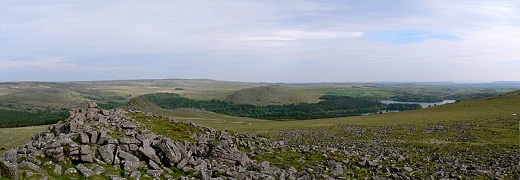
Take a Step into History
Situated about four miles from Tavistock (follow the A390 westbound then take the B3257 at Gullworthy) Morwellham Quay is an AA Award winning 'living history' village. It has a train ride into a real copper mine with displays of mining techniques and visible seams of copper. Because it is a very dark and enclosed space with only dim lighting it really isn't suitable for anybody who suffers from claustrophobia.
There are also rides on wagonettes pulled by shire horses as well as video shows, demonstrations and activities. All the staff wear 19th century costume and visitors can try on replica period costumes in the Limeburners Cottage. There is a restaurant in the 16th century Ship Inn.
Morwellham Quay Website
- Morwellham Quay | Family days out in Devon | Things to do visiting Cornwall | Children's places to v
Family days out in devon | Morwellham Quay is a historic village port and copper mine set in the Tamar Valley near Tavistock in Devon . This attraction is ideal for family days out to while away your time exploring this delightful living history attr

Buckfast Abbey's stained glass window

Buckfast Abbey
The lovely village of Buckfastleigh stands on the eastern border of Dartmoor and its main attraction, Buckfast Abbey, receives around half a million visitors a year, making it one of the most popular attractions in the West Country.
Founded in 1018, before the Norman Conquest, by Benedictine monks the site of the original Saxon building is uncertain. The Abbey was rebuilt by Cistercian monks in 1147 and it prospered by trading in wool and became a major landowner in the area. This came to an end with the Dissolution of the Monasteries in 1539. All of the Abbey's land went to the King while the Abbey buildings were stripped of everything of value and left to decay.
The site was bought in the 19th century by Samuel Berry who demolished almost all the ruins to build a mansion. All that remained was the Abbot's Tower and the 12th century undercroft. The property was bought and sold several times until Dr James Gale bought it in 1872. Ten years later he decided to sell it to a monastic order so that it would revert to its original purpose. Within six weeks of an advertisement appearing in a Catholic newspaper, monks were again making Buckfast Abbey their home. The monks uncovered the original foundations and rebuilt what was, effectively, a 12th century Cistercian abbey and restored the two surviving buildings.
Today the beautiful Abbey Church has much in it worth seeing: stained glass windows made in the Abbey's own workshops, mosaic pavements constructed with marble taken from Greek and Roman buildings and, most striking of all, the Corona Lucis, the light of the world, a huge circular candelabra hanging above the High Altar. There are many other notable and beautiful features in the church and it is well worth a visit. The Abbey has good facilities for visitors including an audio-visual exhibition, a gift shop, restaurant, bookshop, monastic produce shop selling a wide range of stock from candles to chocolate, perfume to pottery, beer to biscuits.
Buckfast Abbey Website
- Buckfast Abbey: Home Page
Get more information about Buckfast Abbey from its own website.
Dartmeet Clapper Bridge
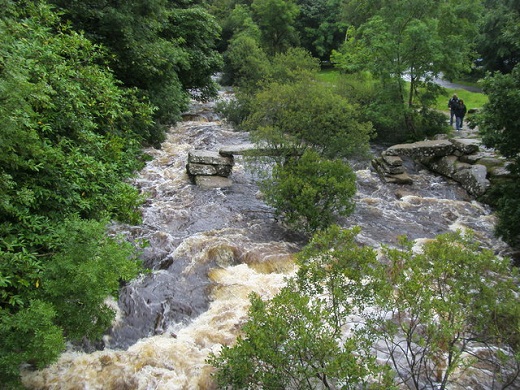
The Hound of the Baskervilles

More Places of Interest on Dartmoor
The rivers on Dartmoor provide some beautiful and sometimes spectacular scenery as they tumble down from the moor through steep wooded valleys. England's highest waterfall, Canonteign Falls, may be seen right on the western edge of the moor about 3 miles north east of Bovey Tracey in the country park of the same name. Apart from stunning views, the park also has a wetland nature reserve, lakes and play areas.
In the north west of the moor, the National Trust owns and protects about 700 acres of the Teign valley around Castle Drogo, a comparatively modern castle designed by Sir Edwin Lutyens and built between 1910 and 1930. Closeby, you can visit the 16th century Fingle Bridge across the River Teign which is overlooked by the Iron Age hillfort, Prestonbury Castle
On the other side of the moor, between Tavistock and Lydford, off the A386, you can see the church of St Michael dramatically set on the volcanic rock of Brent Tor. It dates from the 12th century and is one of the smallest churches in the country. Be brave and energetic and climb the tor and you will be rewarded with spectacular views across Devon and Cornwall. Further north, not far from Okehampton, you can visit High Willhays and Yes Tor, the highest tors on Dartmoor. If you prefer river valleys, while in this part of the moor, don't miss Lydford Gorge where you can see the River Lyd and the gorge it has carved from the rock with its waterfall (White Lady Waterfall). You can even be extra brave and follow the walkway (closed in winter or when the river is particularly wild!) to see the Devil's Cauldron where the water appears to boil as it crashes into the pool, hence the name.
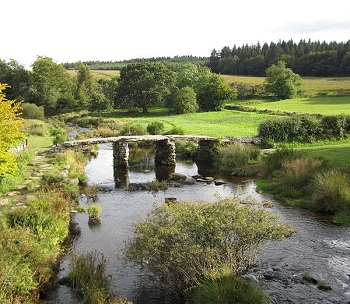
The Clapper Bridge at Postbridge
Take the B3212, between Princetown and Moretonhampstead, across Dartmoor, if you get the chance. Not only is it a scenic route in its own right, there are also many places of interest close to the road. Amongst them is the most famous clapper bridge, Postbridge, on the moor.
Originally built for packhorses, the bridge is made of 4 huge slabs of granite, weighing around 8 tons each, placed on granite built piers. As there is no railing or wall on either side of the bridge, it must have taken quite a bit of courage to cross with horses when the river was in spate. Nowadays, visitors can use a more modern bridge to cross the East Dart River.
There are so many other places to visit on Dartmoor, it is impossible to cover them all here. The best plan is to visit one of the Dartmoor National Park Authority centres. They are located in Haytor, Postbridge, Princetown and Newbridge. Local Tourist Information Centres also have details of places to go and things to see on the moor.
Dartmoor Prison
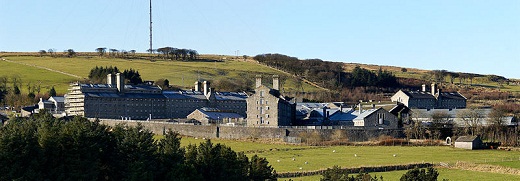
Building started on the prison in 1806 and was finished in 1809. It was built to house French prisoners-of-war (Napoleonic Wars) and then for American prisoners-of-war in 1812.
After 1815 both nationalities were sent home as both wars had ended. The prison stood empty for 35 years until 1850 when much of it was rebuilt and used for convicted criminals. It had the reputation of being the harshest and most severe of the country's prisons. There was a short period between 1917 and 1920 when it was used for conscientious objectors.
Nowadays it is no longer a high security prison and is used for non-violent offenders.

Visiting Dartmoor
The first thing to remember is, that although it is a National Park, much of the land is owned privately so visitors must respect it and the domesticated animals there. Shut gates, keep to rights of way where appropriate, don't light fires negligently, don't drop litter - in other words, behave in the way expected in any other country area.
The army has three live firing ranges on Dartmoor, they are near Okehampton, Merrivale and Willsworthy. The ranges are marked by red and white posts displaying warning signs. During the day, red flags fly when the ranges are in use, and at night there are red lamps. You can check firing times online. Needless to say, it would be a very bad idea to pick up unfamiliar objects on the firing ranges.
Ten Tors Race on Dartmoor
A Challenging Race
If you have teenagers who like a big challenge, they might be interested in the Ten Tors Race that takes place annually in May. The race is between 400 teams, each comprising of six teenagers who are assessed according to age and ability. Depending on these factors, the race is over 35, 45 or 55 miles and lasts for two days during which the teams visit ten tors, as might be guessed from the name.
Not only do the entrants need the strength and stamina to cover the distances involved, they also have to survive on the moor for two days with only what they can carry. Support teams and, when necessary, rescue services, are provided by the army, air force and navy. As conditions on the moor can be very hazardous in extreme weather, the race is a genuine challenge and will certainly prevent boredom, a condition often prevalent amongst teenagers.
Watch Part of the Ten Tors Race
© 2008 Carol Fisher


